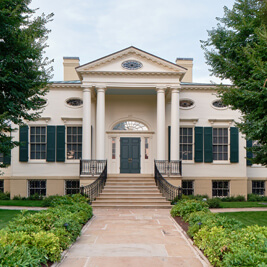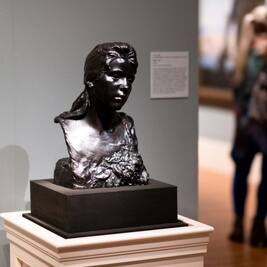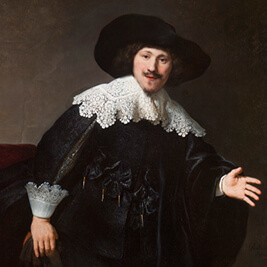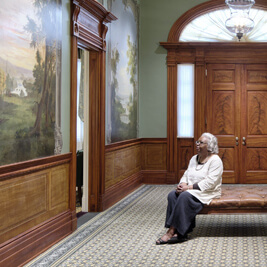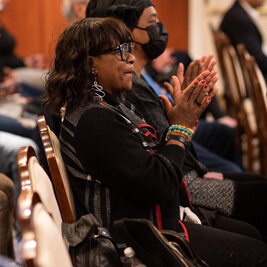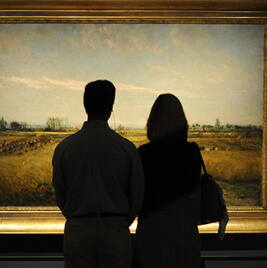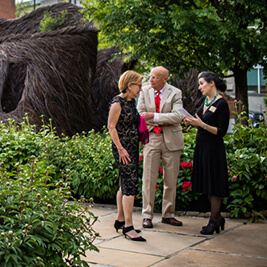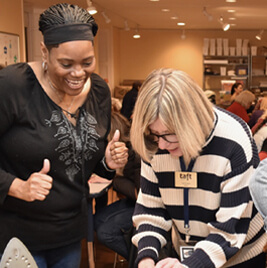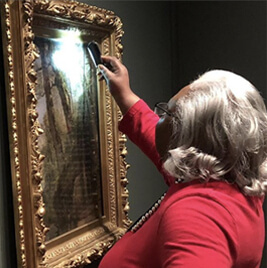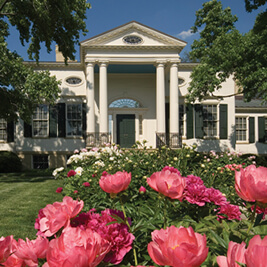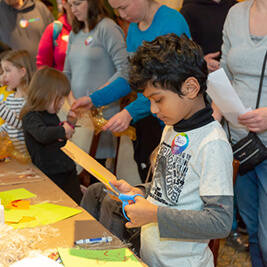- Do + See
- Dine + Host
- Give + Join
- Educate + Learn
Solved: The Mystery of the Unknown Cabinet Maker
By Ann Glasscock, Assistant Curator
On March 6, 1798, a headline in Stewart’s Kentucky Herald, a Lexington newspaper, announced:
Thirty Dollars reward.
——————
RAN away from the subscriber . . . two apprentices to the cabinet making business; one named Porter Clay . . . Clay is about 20 years of age, about 5 feet 10 inches high, fair hair and fair complexion, heavy limb’d and knock-knee’d; took with him one blue coat and one black, one pair of pea-green breeches, and one pair striped overalls. It is hoped that all masters and parents who wish their boys and children to do well, will use their exertions in apprehending the above boys and lodging them in jail. The above reward will be paid by
THOMAS WHITNEY.
This 18th-century notice poses a slew of tantalizing questions. First, was this the same Porter Clay who made the Taft Museum of Art’s early Kentucky sideboard? If so, where did Clay run off to? Was he captured? When did he come back to Lexington? Finally, did he avoid a jail sentence, and, if so, how? Such questions abound in an intriguing story featuring a runaway furniture maker, spiked with notes of nepotism and Kentucky luxury.
Let’s start at the beginning. In 2007, the Museum was given a sideboard made in Kentucky in the early 1800s. For the last 12 years, however, its maker had remained a mystery. Hoping to discover more, I reviewed the documents in the object’s file and began reaching out to furniture specialists. At long last, the decisive reveal was provided by Mack Cox, an independent scholar, who presented previously missing clues about its construction and style to determine that it was almost certainly Porter Clay (fig. 1) who had made the Museum’s sideboard— described by Cox as a “Kentucky masterwork.”
Porter Clay moved with his mother, stepfather, and brother John from Virginia to Lexington in 1792. At the age of 13, he went to work for the talented Irish-born cabinetmaker Thomas Whitney (1764–1819). However, in 1798, just before Clay’s seven-year apprenticeship ended, he fled Whitney’s shop, traveling to New York City to work amid some of the Federal era’s leading furniture makers. From March to December 1798, Whitney repeatedly ran the above newspaper ad, hoping someone would capture his runaway apprentice.
No doubt feeling guilty about leaving Whitney, Clay contacted an older brother to help get him out of trouble. Fortunately for him, Porter Clay’s brother was none other than Henry Clay (1777–1852), who would later become the esteemed statesman called the “Great Compromiser.” Although Henry was at this time merely a young attorney, he did indeed clear Porter’s name via a financial settlement with Whitney. Thereafter, in 1799, Porter returned to Lexington and opened his own furniture shop. Although his venture to New York had been risky, it undoubtedly exposed him to sophisticated new materials, techniques, and designs. Indeed, Clay’s stylish furniture might easily be mistaken for pieces made on the East Coast.
Porter Clay’s sideboard is one of many fashionable works made in Lexington, a booming economic and cultural center once known as “the Athens of the West.” Clay’s brother Henry, after studying law in Virginia, had joined his family in that city, Lexington, in 1797. Two years later, he married Lucretia Hart, with whom he built a home—one that required furniture. Logically, Henry called upon his brother Porter. One of Henry’s account books lists his purchases, including eighteen chairs, two settees, a tea table, a pair of card tables, and one sideboard—the latter the most expensive item on the list, priced at £27. In the 1800s, as today, buffets (or sideboards) held linens, silver, candles, liquor, and other items used in the dining room. Could the Museum’s sideboard (fig. 2) be the very one that was once owned by Henry Clay? I have the clues in hand, so, as they say, I’m hot on the trail of this second mystery!
